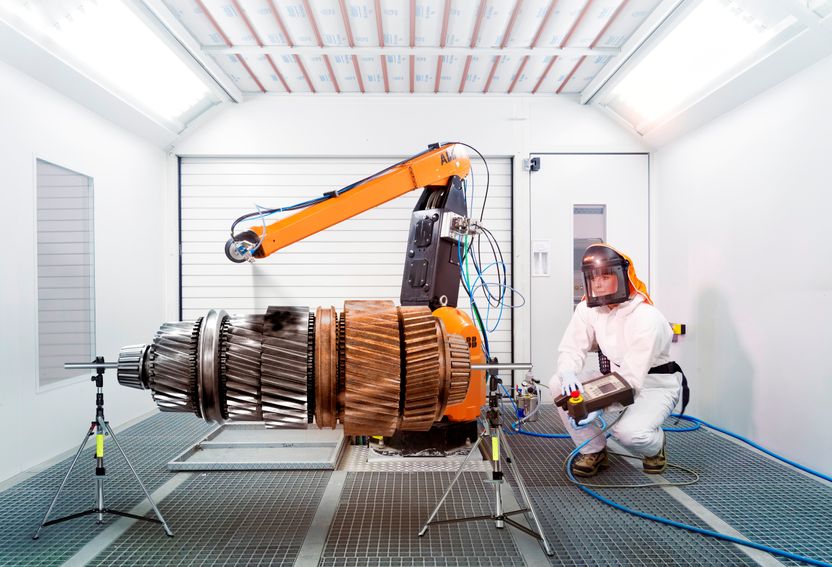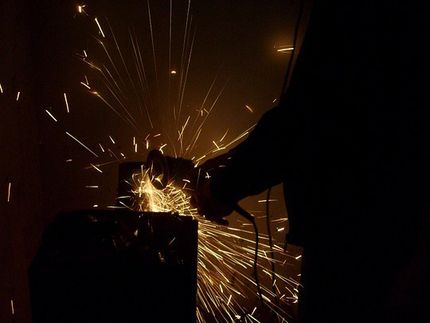New low friction coating allows grease-free lubrication and corrosion protection
Machine parts wear, if there is friction between their metal surfaces. Lubricants and functional oils help prevent this. They attract dirt, debris and dust, and over time form lumps or become resinous. Machine parts then have to be intensively cleaned and regreased, which leads to more frequent maintenance, greater consumption of resources, polluting waste or machine breakdowns. Researchers at the INM – Leibniz Institute for New Materials have now developed a functional coating which lubricates without grease and protects against corrosion at the same time. It is suitable as a coating for metals and metal alloys such as steel, aluminum or magnesium.

Grease-free lubrication and corrosion protection at once via spray coating.
Uwe Bellhäuser
"The thing about our low friction coating is its composition and structure”, explains Carsten Becker-Willinger, Head of the Nanomers Program Division. “We have incorporated platelet-like solid lubricants and platelet-like particles in a binder. When this mixture is applied to a surface, it produces a well-ordered structure in which these various particles are arranged in a roof tile pattern”, he adds. This forms a so-called transfer film between the low friction coating and the object through which surfaces can slide with the minimum of friction. “The particular mixture ratio means that our composite has a very low coefficient of friction. If we only used a solid lubricant, the coefficient of friction would be considerably higher”, says the chemist.
The roof tile structure not only provides low-friction sliding, it also acts as a barrier. This is a particular advantage because as a result the material also prevents moisture or salts penetrating metal surfaces, thus also protecting against corrosion. In a neutral salt spray context, the composite has a corrosion resistance of over 1000 hours on low-alloy steel.
The bonded coating can be applied using classic wet chemistry processes such as spraying or dipping. The roof tile structure forms by simple thermal curing without any further assistance in self-organization.
Most read news
Organizations
Other news from the department science

Get the chemical industry in your inbox
From now on, don't miss a thing: Our newsletter for the chemical industry, analytics, lab technology and process engineering brings you up to date every Tuesday and Thursday. The latest industry news, product highlights and innovations - compact and easy to understand in your inbox. Researched by us so you don't have to.


























































